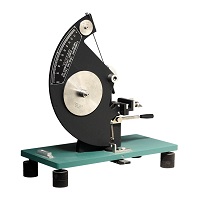- Qinsun Instruments Co., Ltd.
- Tell:+86-21-6780 0179
- Phone:+86-17740808215
- Address:No. 2578 Minhang District Gu Dai Road, Shanghai
- Contact:Mr. Li
- QQ:846490659
Evaluating the Strength of Fabrics: A Tensile Test Analysis

The key to evaluating the strength of fabrics is to perform a tensile test analysis. Tensile testing is one of the common methods of measuring how a fabric behaves under tension and can determine key indicators such as maximum tensile strength, elongation, and breaking strength.
Tensile testing is typically performed using a universal tensile testing machine. During the test, a fabric sample is clamped and a tensile force is applied, while the tensile force is recorded along with the elongation of the sample. During the test, the sample is gradually stretched until fracture occurs.
The following key analytical data can be obtained from the results of the tensile test:
1. Maximum Tensile Strength: Indicates the maximum tensile force that the fabric can withstand during the tensile test.
2. Elongation: Measures the degree of elongation of a fabric in a tensile test and can reflect the ductility and elasticity of the fabric.
3. Fracture Strength: Indicates the strength of the fabric to fracture in a tensile test.

In addition to conventional tensile test analysis, there are several other ways to evaluate the strength and performance of fabrics. The following are some common methods of evaluation:
1. Tear Strength Test: This test measures the strength of a fabric during tearing by applying a force. It provides information on the tear resistance of the fabric and helps to assess the durability of the fabric during use. 2.
2. Rupture Strength Test: Similar to the Tensile Test, the Rupture Strength Test measures the maximum force that a fabric will withstand when it breaks. It provides quantitative data on the tensile strength of a fabric and helps to evaluate how a fabric performs when subjected to a high tensile force.
3. Fatigue testing: Fatigue testing evaluates the change in strength and performance of a fabric under repeated loading. It simulates the cyclical stresses that a fabric may encounter during use and helps assess the durability and life of the fabric.
4. Damage Analysis: Damage analysis analyzes damage patterns when fabrics are damaged. By looking at the damage patterns and areas of the fabric, information can be obtained about fabric strength deficiencies or structural problems.
These tests and analytical methods can help assess the strength and performance of fabrics and provide guidance for textile production and application. The selection of the appropriate test method depends on the specific purpose and application of the assessment. Textile engineers and quality controllers often use these methods to ensure that fabrics meet the required strength requirements and for product improvement and optimization.





